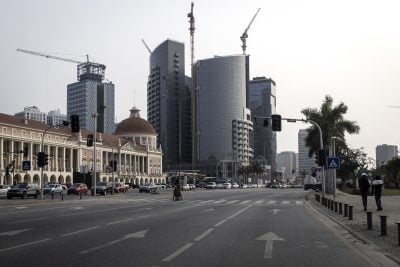Ethiopia (10th). Ethiopia has one of Africa’s fastest-growing economies, at 8% GDP growth per year, and the second largest population (roughly 88m) behind Nigeria. There are more than 80 ethnic groups officially recognised by the government, and these many groups seek highly localised consumer offerings.
English is the most common language and Amharic is the official language, but more than 75 different tongues are spoken across the country. Up to 85% of consumers live in rural areas and are hard for retailers to access.
Price-sensitive Ethiopian consumers usually shop for groceries at small local kiosks called souks, where they buy small quantities (usually $15 or lower) several times per week. Ethiopian diets typically consist of commodities such as wheat, cereals, and local ingredients such as teff.
Cereal shops play a crucial role in distributing cereals, which are purchased in bulk, to households. Consumption patterns are changing, however, as more urban and middle-class consumers seek packaged foods such as pasta. Product availability and, thus, price stability remain major challenges as a few local producers and exclusive branded distributors dominate the market.
Modern distribution is gaining momentum in Addis Ababa, the capital and largest city, and also a frontier market for many retailers. Alle, Ethiopia’s first modern cash-and-carry, is currently building what it hopes will be best-in-class operations and is planning to open three stores in Addis Ababa by the end of 2014. At the same time, local players on the retail scene are introducing into Ethiopia new innovative store concepts brought in from outside.
The city now has more than 40 supermarkets, 100 minimarkets, and 18,000 kiosks (most family-owned). In addition, global consumer goods makers have started investing in Ethiopia – such as Heineken’s $160m in brewer investments –and regional private equity firms such as Schulze GI are actively investing and seeking investments in local companies.
Ethiopia is landlocked, and most products reach the country via neighbouring Djibouti. Customs procedures can cause three-month backups before goods reach Addis Ababa. ‘Gray’ imports (through legal, yet unofficial or unapproved distribution channels) coming through Somalia have a detrimental impact on Ethiopia’s competitive retail environment.
Additionally, a lack of reliable supply chain and logistics companies, government control over some items (such as sugar and palm oil), and poor road infrastructure aggravates supply chain challenges. Government plans to address these issues show its ambitions to become an easier place to do business and a more attractive destination for retail and consumer goods investors.
West Africa
As Africa’s most populous region, West Africa has huge market potential. Nigeria, Gabon, and Ghana are ranked in the ARDI top 10, while five more countries are ranked between 11 and 20.
In the region’s three ranked countries, the retail landscape is evolving, with modern formats slowly moving in and more modern international retailers operating or making plans to. Shoprite, Walmart, and SPAR are some of the few retailers already operating in the region. A strong and growing number of global CPG firms have a presence in the region, particularly Ghana and Nigeria, where multinationals often set up joint ventures with local companies.
Nigeria (2nd). Nigeria has Africa’s largest population (twice as large as second-place Ethiopia) and now the largest economy having overtaken South Africa. Its largest city, Lagos, is the most populous in Africa and one of the 25 largest in the world.
Nigeria’s GDP is growing 6% annually, with wholesale and retail contributing 29% of the total. Increasing urbanisation (half of all Nigerians live in cities), a growing middle class, a youthful population, and increased consumer spending have led to growth in many modern and international supermarkets.
However, Nigeria’s market is one of the toughest in the Index to master, with serious hurdles to overcome before outsiders can succeed. Regulations, land availability, distributor and supplier capabilities, and ease of imports are all roadblocks that will require time and effort to overcome. English is the official language, but more than 100 native languages are spoken across the country.
As Nigeria’s economy grows, an expanding middle class is making more purchasing decisions based on convenience and experience. Many are choosing modern retail as a calmer, albeit more expensive, alternative than the traffic of the traditional markets. Nigerians are also extending to online shopping, with more customers shopping online for apparel and big-ticket goods such as TVs and iPads.
Nigeria’s modern supermarkets are a mix of domestic and foreign retailers. Park ‘n’ Shop, Nigeria’s largest domestic retailer, is one of the few to operate a chain. Its range of in-store offerings is popular with consumers, as is its focus on fresh foods. Foreign supermarkets such as Shoprite and SPAR mainly sell imported products appealing to expats in Lagos.
Want to continue reading? Subscribe today.
You've read all your free articles for this month! Subscribe now to enjoy full access to our content.
Digital Monthly
£8.00 / month
Receive full unlimited access to our articles, opinions, podcasts and more.
Digital Yearly
£70.00 / year
Our best value offer - save £26 and gain access to all of our digital content for an entire year!

 Sign in with Google
Sign in with Google 


